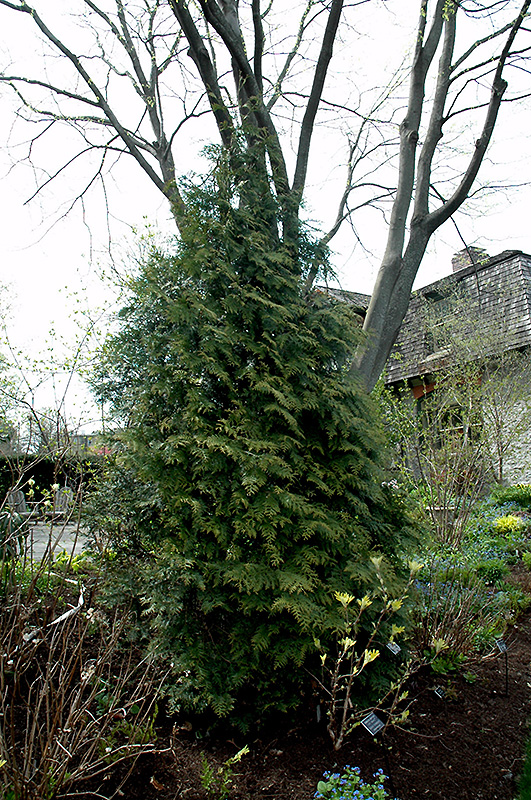>> Home
Height: 30 feet
Spread: 15 feet
Sunlight:
![]()
![]()
Hardiness Zone: 5
Other Names: Western Red Cedar, Western Arborvitae
Description:
A sturdy and beautiful evergreen tree with a nice pyramidal shape; takes pruning exceptionally well, a perfect selection as a trimmed hedge, vertical accent, or dense screen; more adaptable to different soil conditions
Ornamental Features
Excelsa Red Cedar is primarily valued in the landscape for its distinctively pyramidal habit of growth. It has attractive forest green evergreen foliage which emerges light green in spring. The fragrant scale-like sprays of foliage are highly ornamental and remain forest green throughout the winter.
Landscape Attributes
Excelsa Red Cedar is a dense evergreen tree with a strong central leader and a distinctive and refined pyramidal form. Its relatively fine texture sets it apart from other landscape plants with less refined foliage.
This is a relatively low maintenance tree. When pruning is necessary, it is recommended to only trim back the new growth of the current season, other than to remove any dieback. Deer don't particularly care for this plant and will usually leave it alone in favor of tastier treats. It has no significant negative characteristics.
Excelsa Red Cedar is recommended for the following landscape applications;
- Accent
- Vertical Accent
- Hedges/Screening
- Windbreaks and Shelterbelts
Planting & Growing
Excelsa Red Cedar will grow to be about 30 feet tall at maturity, with a spread of 15 feet. It has a low canopy, and should not be planted underneath power lines. It grows at a medium rate, and under ideal conditions can be expected to live for 50 years or more.
This tree does best in full sun to partial shade. It prefers to grow in average to moist conditions, and shouldn't be allowed to dry out. It may require supplemental watering during periods of drought or extended heat. It is not particular as to soil type or pH. It is somewhat tolerant of urban pollution, and will benefit from being planted in a relatively sheltered location. Consider applying a thick mulch around the root zone in winter to protect it in exposed locations or colder microclimates. This is a selection of a native North American species.
